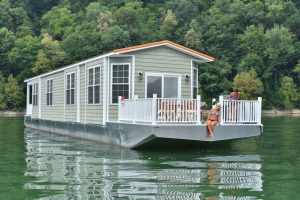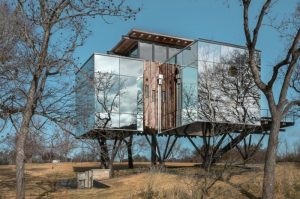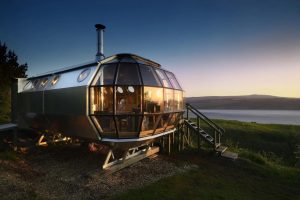
Best RV parks for families offer more than just a place to park; they provide a launching pad for unforgettable adventures. This guide explores the top family-friendly RV parks across the US, detailing their amenities, nearby activities, and crucial considerations for planning your perfect family RV trip. We’ll delve into everything from budgeting and safety tips to choosing the right park based on your family’s age range and interests, ensuring a smooth and enjoyable experience for everyone.
From comparing parks ideal for toddlers versus teenagers to providing sample itineraries and budget breakdowns, we aim to equip you with the knowledge and resources needed to make informed decisions and create lasting memories on your next family RV vacation. We’ll also touch upon alternative vacation options to help you weigh the pros and cons of RVing against other family travel choices.
Top RV Parks for Families
Choosing the perfect RV park for a family vacation requires careful consideration of location, amenities, and overall atmosphere. A successful trip hinges on finding a park that caters to the diverse needs and interests of everyone in your family, from toddlers to teenagers. This selection focuses on parks known for their exceptional family-friendly offerings.
Top RV Parks for Families: Location & Amenities
Finding the ideal RV park for your family often involves balancing desired location with the amenities that will make your stay enjoyable and memorable. The following table highlights ten parks across the US, renowned for their family-friendly features. Note that average costs are estimates and can vary based on the season and type of site.
| Park Name | Location | Key Amenities | Average Cost (per night) |
|---|---|---|---|
| Jellystone Park (various locations) | Multiple locations across the US | Themed playgrounds, swimming pools, water slides, mini-golf, planned activities (e.g., crafts, ranger programs), and often cabins in addition to RV sites. | $50-$100 |
| KOA Holiday Parks (various locations) | Multiple locations across the US | Swimming pools, playgrounds, organized activities (e.g., campfire sing-alongs, movie nights), often have dog parks, and various site options. | $40-$80 |
| Thousand Trails (various locations) | Multiple locations across the US | Access to multiple parks within the network, pools, playgrounds, fishing lakes, often have nature trails, and a strong community feel. | Varies greatly depending on membership |
| Disney’s Fort Wilderness Resort & Campground | Orlando, Florida | Proximity to Disney World, themed activities, transportation to parks, playgrounds, pools, and a rustic yet luxurious atmosphere. | $100+ |
| Lake Dillon RV Resort & Marina | Dillon, Colorado | Stunning mountain views, access to Lake Dillon, pools, playgrounds, fishing, boating, and hiking trails nearby. | $70-$120 |
| Pismo Beach RV Resort | Pismo Beach, California | Beachfront location, pools, playgrounds, close proximity to shops and restaurants, and a vibrant beach town atmosphere. | $80-$150 |
| Outer Banks KOA | Kitty Hawk, North Carolina | Close proximity to the beach, pools, playgrounds, bike rentals, and activities geared towards exploring the Outer Banks. | $60-$100 |
| Big Sky Resort RV Park | Big Sky, Montana | Mountain views, proximity to skiing and other outdoor activities, pools, playgrounds, and a quieter, nature-focused atmosphere. | $60-$100 |
| Canyonlands National Park Campground | Moab, Utah | Stunning desert landscapes, proximity to hiking and biking trails, and a chance to experience the natural beauty of Canyonlands. (Note: Amenities may be more basic compared to others on the list) | $20-$35 |
| Yosemite Valley Campground | Yosemite National Park, California | Breathtaking views of Yosemite Valley, proximity to hiking trails and iconic landmarks, and a chance to experience the grandeur of Yosemite. (Note: Amenities are basic and reservations are essential). | $20-$40 |
Each park offers unique features designed to appeal to families. Jellystone Parks, for instance, are known for their themed playgrounds and organized activities that engage children of all ages. KOA campgrounds provide a balance of amenities and activities, making them suitable for a wide range of family preferences. Disney’s Fort Wilderness Resort provides the unique advantage of being located within easy reach of Disney World, creating a magical experience for families with younger children.
Comparison of Parks for Different Age Groups
A comparison of three parks – Jellystone Park, KOA, and Lake Dillon RV Resort – reveals their varying suitability for families with young children versus teenagers.
Jellystone Parks, with their dedicated playgrounds and themed activities, are exceptionally well-suited for families with young children. The planned activities, often featuring characters and age-appropriate games, keep younger children entertained and engaged. However, teenagers might find the activities less stimulating. KOA campgrounds offer a more balanced approach, with amenities and activities catering to a wider age range. While they still feature playgrounds and family-friendly events, they also provide options that might appeal more to teenagers, such as sports courts or access to nearby attractions.
Lake Dillon RV Resort, with its focus on outdoor activities like hiking and boating, is better suited for families with older children and teenagers who enjoy more adventurous pursuits. The stunning mountain scenery provides a backdrop for exploring and experiencing nature. While younger children may enjoy the pools and playgrounds, the overall experience is better tailored to the interests of older children and adults.
Family-Friendly Activities Near RV Parks: Best RV Parks For Families
Choosing an RV park is only half the fun; the surrounding area offers a wealth of family-friendly activities that can make your vacation truly memorable. The right selection of nearby attractions can enhance your camping experience, providing diverse entertainment options for all ages and interests. This section will explore some popular options and consider their accessibility and cost.
Many RV parks are strategically located near national parks, beaches, amusement parks, and charming towns, providing a diverse range of activities. The accessibility and cost of these activities vary widely depending on location and the specific attraction. Some offer free or low-cost options like hiking trails or public beaches, while others involve paid entry fees or require transportation costs.
Family-Friendly Activities Near Popular RV Parks
The following list showcases a variety of activities suitable for families near popular RV parks across different regions. The examples are illustrative and not exhaustive, as the specific options depend heavily on the chosen park’s location.
- National Parks: Many RV parks are situated near national parks, offering opportunities for hiking, wildlife viewing, and exploring stunning natural landscapes. Accessibility varies greatly; some trails are paved and easily accessible for strollers and wheelchairs, while others require more strenuous hikes. Entry fees to national parks usually apply, but often offer annual passes for frequent visitors. Examples include exploring the giant sequoias in Sequoia & Kings Canyon National Parks (California) or hiking amongst the redwoods in Redwood National Park (California).
- Beaches: Coastal RV parks provide easy access to beaches perfect for swimming, sunbathing, building sandcastles, and surfing. Accessibility depends on the beach itself; some have ramps and accessible walkways, while others may be more challenging. Beach access is usually free, but parking fees may apply in some areas. Consider the beaches of Southern California, known for their family-friendly atmosphere and various water activities.
- Amusement Parks: Several RV parks are located near popular amusement parks, offering thrilling rides and entertainment for all ages. These parks typically have entry fees, and additional costs may apply for food and souvenirs. Six Flags and Disney parks are prime examples, with accessibility features varying between parks and attractions. It’s recommended to check individual park websites for accessibility information before your visit.
- Theme Parks: Similar to amusement parks, theme parks offer immersive experiences based on specific themes (e.g., water parks, movie-themed parks). These typically have entrance fees, and extra costs may apply for food and special events. Universal Studios and Legoland are examples, and accessibility features should be checked on the respective park websites.
- Local Towns and Events: Exploring nearby towns offers opportunities for shopping, dining, and discovering local culture. Many towns host farmers’ markets, festivals, and other events throughout the year, providing free or low-cost entertainment. Accessibility varies depending on the specific town and event; check local websites or tourism information for details.
Sample Itinerary: Yosemite National Park Area
This itinerary illustrates how to incorporate local attractions into a family vacation centered around an RV park near Yosemite National Park. This example assumes a three-day stay.
Day 1: Arrive at the RV park, set up camp, and enjoy a relaxing evening. Consider a short, easy nature walk near the park to acclimate to the environment.
Day 2: Visit Yosemite Valley. Take a scenic drive, stop at viewpoints like Tunnel View, and hike to Yosemite Falls (consider the difficulty level based on family members’ fitness). Pack a picnic lunch to enjoy amidst the stunning scenery. Evening: stargazing if weather permits.
Day 3: Explore Mariposa Grove of Giant Sequoias. Take a guided tour or hike among these majestic trees. Accessibility varies; some trails are paved and accessible, while others require more strenuous hiking. In the afternoon, visit the charming town of Mariposa for souvenir shopping and dinner before departing.
Note: Yosemite National Park requires an entry fee, and reservations are often necessary, especially during peak season. Accessibility features are available in many areas of the park, but it is crucial to check the park’s website for detailed information beforehand.
RV Park Reviews and Ratings
Understanding what other families have experienced is crucial when choosing an RV park for your vacation. Online reviews offer a wealth of information, providing insights into the realities of different parks beyond marketing materials. By examining both positive and negative feedback, you can make a more informed decision that best suits your family’s needs and preferences.
Family Review Analysis of RV Parks, Best RV parks for families
Analyzing reviews from various sources allows for a comprehensive understanding of the strengths and weaknesses of different RV parks. The following table summarizes feedback from families, highlighting common themes. Remember that individual experiences can vary, and it’s advisable to read multiple reviews before making a booking.
| Park Name | Review Source | Positive Aspects | Negative Aspects |
|---|---|---|---|
| Jellystone Park (Example Location) | Google Reviews, RV Park Reviews | Clean facilities, friendly and helpful staff, plenty of family-friendly activities (e.g., water park, playground), spacious sites. Many reviewers praised the themed activities and overall family atmosphere. | Some reviewers mentioned the park could get crowded, especially during peak season. A few complaints regarding the cost of some activities. |
| KOA (Example Location) | Yelp, Campendium | Convenient location, well-maintained amenities, clean restrooms and showers, helpful staff. Many families appreciated the convenience of the location and the availability of hookups. | Some negative reviews cited noise levels from neighboring sites, particularly on weekends. A few mentioned that some amenities were dated or in need of repair. |
| National Park Campground (Example Location) | TripAdvisor, The Dyrt | Beautiful natural setting, quiet and peaceful environment, affordable rates. Families loved the proximity to hiking trails and other outdoor activities. The stunning scenery was frequently highlighted. | Basic amenities, limited hookups, potential for wildlife encounters (which some families found exciting, others concerning). Reservations were noted as being difficult to secure. |
Common Themes in Family RV Park Reviews
Common positive themes across reviews consistently highlight cleanliness of facilities (restrooms, showers, common areas), helpful and friendly staff, and the availability of family-friendly activities. Safety and security were also frequently mentioned as positive aspects. Negative feedback often centers around noise levels, overcrowding, the condition of amenities (especially older parks), and difficulties with reservations or site availability, particularly during peak seasons.
Cost of amenities was also a recurring concern for some families.
Planning a Family RV Trip

Embarking on a family RV adventure requires careful planning, especially when considering the financial aspects and logistical arrangements. A well-structured budget and a detailed itinerary are crucial for a smooth and enjoyable trip. This section will break down the typical costs involved and offer strategies for cost-effective planning.
Typical Costs Associated with a Family RV Trip
Several factors contribute to the overall expense of a family RV trip. Understanding these components allows for better budgeting and financial preparedness. The costs can vary greatly depending on the length of the trip, the size of the RV, the chosen destinations, and the family’s spending habits.
- RV Rental or Purchase: The largest single expense. Renting an RV typically ranges from $100 to $300+ per night, depending on size and amenities. Purchasing an RV involves a significant upfront cost, but can be more economical in the long run for frequent travelers. Consider depreciation and maintenance costs when comparing rental versus purchase.
- Campground Fees: These fees vary widely based on location, amenities (e.g., hookups, pools), and the time of year. Expect to pay between $30 and $80 per night, potentially more for popular destinations or resorts.
- Fuel Costs: Fuel consumption for RVs is substantial. The cost depends on the RV’s size, fuel efficiency, and the distance traveled. It’s wise to factor in around $100-$200 or more per week, depending on the length of your journey.
- Food and Groceries: Cooking your own meals significantly reduces costs compared to eating out. Budget approximately $50-$100 per day for a family of four, adjusting based on your family’s size and dietary preferences. Consider stocking up on non-perishable items before the trip.
- Activities and Entertainment: Plan for entrance fees to national parks, amusement parks, or other attractions. Allocate a daily or weekly budget for these expenses, which can range widely depending on your chosen activities.
Sample Budget for a Week-Long Family RV Vacation
This sample budget is for a family of four traveling for a week. Adjust these figures based on your family’s size, destination, and spending habits.
| Item | Cost |
|---|---|
| RV Rental (7 nights) | $1400 |
| Campground Fees (7 nights) | $350 |
| Fuel | $200 |
| Groceries & Food | $700 |
| Activities & Entertainment | $350 |
| Total Estimated Cost | $3000 |
Tips for Saving Money on a Family RV Trip
Several strategies can help reduce the overall cost of your RV adventure.
- Travel during the off-season: Campground fees and RV rentals are often lower during the shoulder seasons (spring and fall) or off-peak times.
- Utilize free camping options: Consider dispersed camping on public lands (where permitted) or utilizing free overnight parking at Walmart or other designated locations.
- Cook most meals: Preparing your own meals significantly cuts down on food expenses.
- Pack snacks and drinks: Avoid impulse purchases at convenience stores by bringing your own snacks and drinks.
- Take advantage of free activities: Hiking, exploring local parks, and visiting free attractions can save money on entertainment.
- Look for discounts and coupons: Many campgrounds and RV parks offer discounts for AAA members, military personnel, or those booking in advance.
Safety and Security in RV Parks for Families
Ensuring the safety and security of your family while enjoying an RV vacation is paramount. A well-planned trip includes proactive measures to mitigate potential risks and create a worry-free experience for everyone. This section Artikels essential safety practices and considerations for choosing a secure RV park environment.Choosing a reputable and well-maintained RV park is the first crucial step in ensuring family safety.
Well-maintained parks typically have better lighting, well-defined roadways, and readily available security personnel or monitoring systems. These features help deter criminal activity and provide peace of mind for families. Conversely, poorly maintained parks may present safety hazards such as inadequate lighting, creating opportunities for theft or accidents.
Securing Belongings and Personal Safety
Protecting your valuables is essential for a safe RV trip. Simple precautions can significantly reduce the risk of theft. This includes locking all vehicle doors and windows, even when you’re only briefly away from your RV. Valuables should be stored securely out of sight, ideally in a locked compartment or safe. Additionally, never leave personal items unattended in common areas, such as picnic tables or around the pool.
Being aware of your surroundings is also critical. Avoid walking alone at night, and always stick together as a family. Familiarize yourselves with emergency exits and the location of park security personnel.
Potential Safety Concerns and Preventative Measures
Several potential safety concerns exist within RV parks. These include theft, accidents, and exposure to hazards. Theft can be minimized by taking the precautions mentioned above. Accidents can be reduced by adhering to park rules, such as speed limits and designated walking areas. Children should always be supervised around water, and appropriate safety measures should be employed.
Awareness of potential hazards, such as uneven terrain or poorly maintained equipment, is also essential. Reporting any unsafe conditions to park management promptly allows for quick remediation. Furthermore, keeping a first-aid kit readily accessible is vital in case of minor injuries.
Choosing a Reputable RV Park
Selecting a reputable RV park is a cornerstone of family safety. Research is key. Check online reviews and ratings from other families to gauge the park’s security measures and overall safety record. Look for parks with security cameras, gated entrances, and on-site security personnel. Readily available emergency services and clear emergency procedures are also vital indicators of a well-managed and safe park.
Inquire about the park’s policies regarding pets and children, ensuring they align with your family’s needs and priorities. Finally, consider visiting the park in person before booking to assess its condition and overall security measures firsthand.
Alternative Family Vacation Options

Choosing the perfect family vacation involves weighing various factors, including budget, desired activities, and travel style. While RV travel offers unique advantages, several other options cater to diverse family needs and preferences. This section compares and contrasts RVing with popular alternatives, highlighting their respective pros and cons to aid in informed decision-making.
Comparison of Family Vacation Options
The following table compares RV travel with other popular family vacation choices, considering cost, advantages, and disadvantages. Remember that costs can fluctuate significantly depending on factors like travel dates, location, and specific choices within each option.
| Option | Cost | Pros | Cons |
|---|---|---|---|
| RV Travel | Variable; can range from budget-friendly to luxurious, depending on RV type and rental/purchase costs, plus fuel, campsite fees, and incidentals. | Flexibility, control over itinerary, spacious accommodations, potential cost savings (especially for large families), opportunity to experience diverse landscapes and activities. | Requires planning and preparation, potential for mechanical issues, limited spontaneity, can be tiring for long journeys, campsite availability can be an issue during peak seasons. |
| Flight Deals + Hotel Stays | Variable; flights can be affordable with deals, but hotel costs can add up, especially for larger families. | Relatively quick travel, access to a wider range of destinations, convenience of pre-booked accommodations. | Can be expensive, especially during peak seasons, limited space in hotel rooms, less flexibility in itinerary, potential for flight delays and cancellations. |
| Train Travel | Moderate to high; depends on distance, class of travel, and amenities. | Scenic views, relaxed travel experience, often includes onboard amenities, reduced driving stress. | Limited destinations, less flexibility in itinerary, potential for delays, can be expensive for large families. |
| Cruises | High; includes accommodation, meals, and some onboard activities, but excursions can be extra. | All-inclusive experience, wide range of onboard activities, potential for visiting multiple destinations. | Can be crowded, limited flexibility in itinerary, potential for seasickness, additional costs for excursions and drinks. |
| Road Trips (Budget Accommodations) | Low to moderate; utilizes budget-friendly options like motels or hostels. | Flexibility, opportunity to explore different areas, cost-effective. | Can be tiring, requires more driving, less comfortable accommodations than other options. |
| Vacation Rentals | Variable; depends on location, size, and amenities. | More space than hotels, often includes kitchen facilities, home-like feel. | Can be more expensive than hotels, requires more self-catering, may lack hotel amenities. |
| Unique Stays (e.g., Treehouses) | Moderate to high; prices vary greatly depending on location and uniqueness. | Memorable experience, unique accommodations, often located in scenic areas. | Limited availability, may lack amenities found in other accommodations, potentially less convenient location. |
| Houseboat & Yacht Stays | High; costs vary greatly depending on the size and type of vessel, location, and duration. | Unique and luxurious experience, potential for exploring waterways and secluded areas. | Requires boating experience or hiring a captain, can be expensive, limited access to land-based activities. |
Incorporating Alternative Options into Larger Travel Plans
Many families blend different vacation options to create a customized travel experience. For example, a family might fly to a destination, then rent a car for a road trip exploring the surrounding area, staying in a mix of hotels and vacation rentals. Alternatively, a cruise could be combined with a pre- or post-cruise land tour, offering a broader range of experiences.
RV travel itself can be incorporated into a larger plan, serving as a base for exploring a region before flying home or transitioning to other modes of transportation. The possibilities are vast, allowing for tailored itineraries that cater to specific family interests and budgets.
Planning a successful family RV trip involves careful consideration of various factors, from choosing the perfect park to budgeting effectively and prioritizing safety. By understanding the unique needs and preferences of your family, and leveraging the resources and information provided in this guide, you can confidently embark on an unforgettable adventure, creating cherished memories that will last a lifetime.
Remember to always prioritize safety, research your chosen location thoroughly, and most importantly, have fun!
FAQ
What is the best time of year to go RVing with a family?
The best time depends on your destination and tolerance for crowds and weather. Spring and fall often offer pleasant temperatures and fewer crowds than summer.
How do I keep my kids entertained during a long RV trip?
Pack plenty of books, games, and movies. Plan for regular stops at parks and attractions. Involve them in the driving and campsite setup.
What are some essential items to pack for a family RV trip?
Essentials include clothing for all weather conditions, first-aid kit, toiletries, bedding, cooking supplies, games, entertainment, and a well-stocked cooler.
How can I find affordable RV parks?
Consider camping during the off-season, utilizing discount websites or apps, and look for parks offering weekly or monthly rates.





